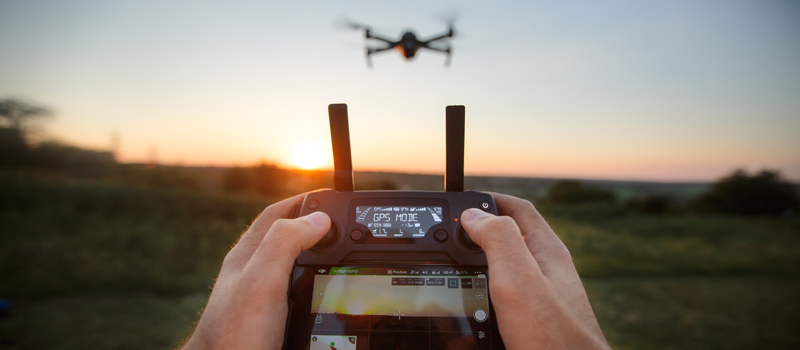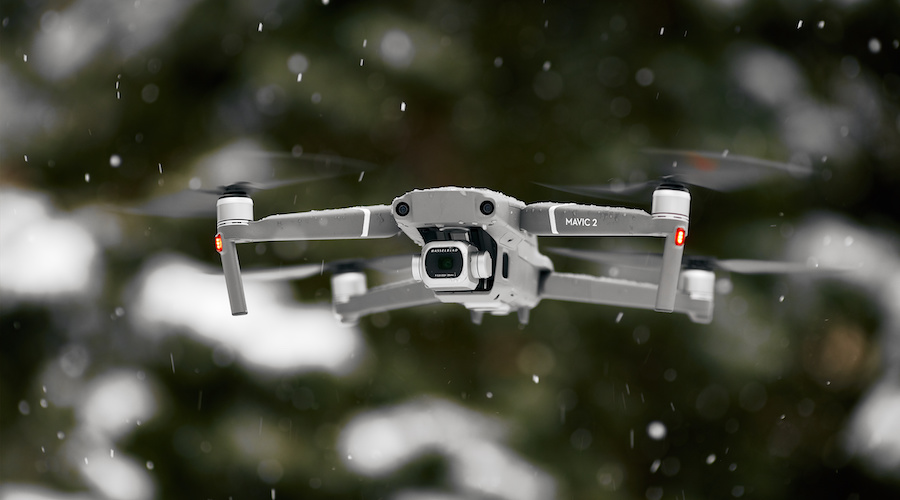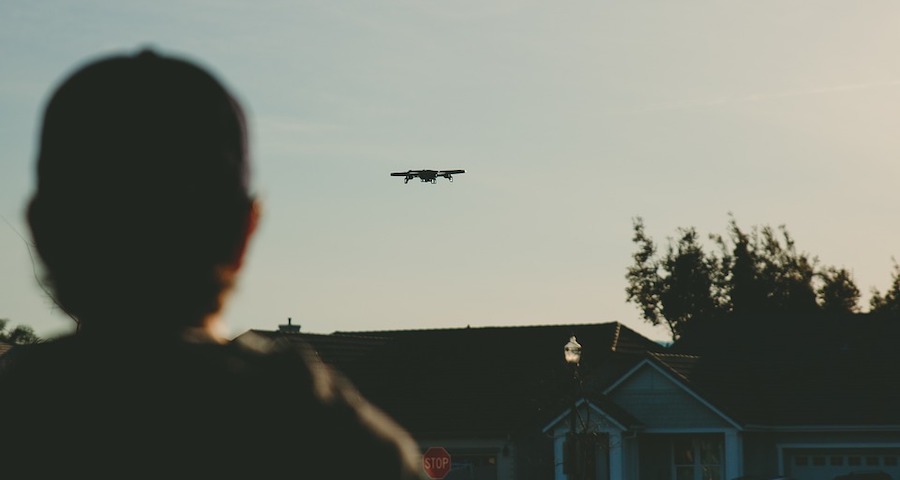-
What is Remote ID?
-
A brief history of Remote ID
-
A few new terms defined
-
What do the Remote ID rules say?
- Operate a Standard Remote ID Drone
- Operate a drone with a Remote ID broadcast module
- Operate in a FRIA without Remote ID equipment
-
Who is required to comply with Remote ID?
-
When will Remote ID be required?
-
How is Remote ID going to work?
-
What information will be broadcast through Remote ID?
- Serial number / Session ID or Module Serial Number
- Location, altitude, velocity of the drone
- Location, altitude of the Control Station or take-off location
- Emergency status
- Time mark
-
What if a drone loses its broadcast signal?
-
Potential issues
- Flying indoors (no GPS signal)
- Divulging the location of the Control Station is unsafe
- Rules may evolve to support the UTM system
-
Final thoughts
Finally, the FAA has published the rules on the soon-to-be-implemented Remote ID system for drones. This is easily one of the most controversial topics within the drone community for the past year. Just before 2020 ended, the FAA released the final ruling on Remote ID after numerous delays and a proposal stage besieged by arguments.
The official Remote ID ruling is a document with almost 500 pages. This short guide will attempt to summarize the important points of the ruling for the common recreational and commercial drone pilots. However, this is not a comprehensive coverage of the ruling. As laws go, it’s probably going to take some time before we can fully digest every single point included in the documentation.
What is Remote ID?
Remote ID technology has been considered by the FAA to be the ultimate step towards integrating into the national airspace system. The idea is to embed a “digital license plate” into the drone, allowing it to be identified by people or equipment that are not directly associated with the drone operator. Ideally, this will create a higher sense of accountability among drone pilots and assuage the public concern of privacy and security.
Why is Remote ID such a big deal? Right now, drone flight is an activity with a lot of restrictions. Most of these have been put in place to maintain the safety of national airspace, but they may also have repercussions related to the security and privacy of the public. The idea of implementing a Remote ID system in drones is that it will allow for the use of drones in circumstances that would otherwise have been restricted, such as flying over people, at night, or beyond visual line of sight.
The technology and the protocols for implementing Remote ID have evolved over the past few years. As we shall see later on, the initial proposals from the FAA have not been met favorably by the drone community. Thankfully, a good middle ground has been reached for the final ruling.
A brief history of Remote ID
Although the concept of a Remote ID has already been floating around for a couple of years prior, the first documentary initiative was filed by the FAA in December 2019. This was in the form of a Notice of Proposed Rulemaking (NPRM) that was filed into the Federal Register on December 31st, 2019, after which it went through a 60-day window for commenting.
During the 60-day period, the FAA received over 53,000 comments. This was a testament to the growth of the drone community, considering that the NPRM for Part 107 only received comments amounting to about a tenth of that number. Less encouraging was the fact that most of these comments were critical of the proposed terms of Remote ID.
Among the many concerns presented after the NPRM was published was the requirements for drone pilots to have an active Internet connection while flying a drone for the Remote ID system to work. This meant added expenses for a data connection and an added burden for drone manufacturers. Some drone pilots also expressed misgivings about broadcasting data which could compromise their privacy and security.
Now that the final ruling for the Remote ID has been published, we can start looking forward to and preparing for its eventual implementation. Without discussing the details of the final ruling yet, we’re happy to say that the FAA seems to have taken heed of the concerns of the drone community.
A few new terms defined
With the new Remote ID rules, the FAA has also released new official definitions of terms. To make sure everyone is on the same ground, let’s define these terms before discussing any further points.
- UA – an unmanned aircraft used to pertain to the aircraft only
- UAS – an unmanned aerial system that includes both the aircraft, its accessories, and the control or ground station
- Broadcast – In the context of Remote ID, this refers to the sending of information from an unmanned aircraft using radio frequency signals.
- Home-built unmanned aircraft – An unmanned aircraft that an individual built solely for education or recreation. This is an admittedly ambiguous definition which we will need to clarify further later on.
- Declaration of compliance (DoC) – a document submitted to the FAA by the manufacturer of an unmanned aircraft or Remote ID module to attest that their product meets the requirements outline in subpart F of the Remote ID rules.
What do the Remote ID rules say?
Much like Part 107, the Remote ID rules will add another term to the lexicon of drone pilots – Part 89. Officially titled “Remote Identification for Unmanned Aircraft” or 14 CFR Part 89, the new Remote ID rule has also made amendments to already existing laws including Part 1, 47, 48, 91, and 107. The official documentation is 470-pages long and comes with a 3-page executive summary.
In a nutshell, Part 89 will require all drones operating within national airspace to have Remote ID capabilities. This will allow drones to broadcast information including the identity, altitude, and location of the drone as well as the location of its control station or the spot where it took off.
There will be three options for drone pilots to comply with Remote ID:
Operate a Standard Remote ID Drone
This pertains to operating a drone with built-in Remote ID capabilities according to the requirements of Part 89. With Remote ID becoming a norm, we expect most drones manufactured and launched by major brands in the next couple of years to fall under this category.
Operate a drone with a Remote ID broadcast module
In case a drone does not have built-in Remote ID technology, it can be instead augmented with a Remote ID broadcast module. This retrofit should provide the same capabilities as the built-in modules found in Standard Remote ID Drones.
Operate in a FRIA without Remote ID equipment
Operations of drones without Remote ID capabilities will be allowed but only within pre-define FAA-recognized identification areas (FRIA). These have to be sponsored and applied for by community-based organizations or educational institutions.
Who is required to comply with Remote ID?
All drones that need to be registered under the current rules will need to comply with Remote ID requirements. At this point, the distinction between commercial and recreational drone pilots needs to be made. Here are some items to remember:
- All drones operated for commercial use or under Part 107 rules need to have Remote ID, regardless of weight
- Drone used recreationally that weight more than 250 grams or 0.55 lbs. need to have Remote ID. Drones that fall below the weight threshold, including the DJI Mavic Mini and Mini 2, are not required to comply with Remote ID.
- Drones used for public safety must also have Remote ID.
- Drones operated by the Federal Government are exempted from Remote ID requirements.
- However, drones used by governments at the state, local, or tribal level must still comply with Remote ID.
- Drones that are designed and produced for Aeronautical Research are also exempted from Remote ID requirements. This is a very specific category that likely does not apply to many drone pilots.
When will Remote ID be required?
The good news is that you won’t need to worry about Remote ID requirements right away – you have more than two years to make the necessary preparations. Here is a timeline Remote ID will roll out over the next couple of months:
- The final rule is expected to be filed and published in the Federal Register sometime within January 2021. The FAA has not released an exact date.
- The regulation will go into effect 60 days after filing. This will be sometime in March 2021.
- Drone manufacturers will be required to fully comply with Remote ID rules 18 months after the rule’s effective date. This will be sometime in September 2022. This means that all drones sold and manufactured beyond this date must come with Remote ID capabilities compliant with the FAA’s requirements.
- All drone pilots must meet the operational requirements of Remote ID 30 months after the rule’s effective date. This will be sometime in September 2023. This means having to use a drone with Remote ID capabilities or flying only within a FRIA. Take note that this is the deadline – drone pilots can start compliance any time after March 2021.
How is Remote ID going to work?
The specifics of how Remote ID is going to work will vary slightly depending on whether your drone has a built-in Remote ID or if you’re using an attachable Remote ID module. Either way, Remote ID will use either Wi-Fi or Bluetooth technology to broadcast messages from the drone.
With the drone continuously broadcasting using radio frequency signals, people on the ground can then receive these messages as long as they are within range. This range will vary based on the drone you are using and will likely be affected by factors such as the presence of obstacles or any sources of electromagnetic noise.
Drones with no built-in Remote ID can instead use an attachable module or “dongle.” We expect this to be more common in older drones or that have been home-built. The main difference with this approach is that the serial number of the Remote ID module needs to be attached to the drone’s registration record with the FAA. Another layer of limitation is that such drones can only be operated within visual line of sight.
Ideally, the people scanning the broadcast will be law enforcement officers or representatives from the FAA. However, the general public can also receive these messages and access all the info included therein. There could be some issues with the public accessing this broadcast which we’ll get to later on.
Take note that the operational requirements of Remote ID are a significant departure from what was proposed in the NPRM. Under the final ruling, drone pilots no longer need to have an active Internet or network connection to broadcast Remote ID messages.
Drones need to have Remote ID active from takeoff to shutdown. It cannot be turned off mid-flight, and we expect drones to have features that will prevent them from taking off without activating Remote ID.
In any case, drones still are not allowed to use ADS-B signals for Remote ID or for any other purpose. This is because the sheer number of drones flying in national airspace can congest the network of ADS-B signals, making it harder to single out those coming from manned aircraft
What information will be broadcast through Remote ID?
Each message broadcasted through Remote ID will contain information meant to aid the FAA or law enforcement identify a drone flying nearby and determine if the drone is “friendly” or is being operated for malicious reasons. Certain aspects of the information packet may vary depending on whether it is being broadcasted from the drone or from a Remote ID module.
To keep the information timely, the FAA has prescribed Remote ID technology to broadcast messages at a rate of one message per second. Even with latency, message transmission at this rate should ensure that people on the ground receive information that is sufficiently close enough to be real-time.
Serial number / Session ID or Module Serial Number
If the information is being broadcasted from the drone, then its main identifier will either be the drone’s registration serial number or a randomized Session ID. The Session ID is an option provided for drone operators who frequently fly over the same area. The idea is to make the drone more difficult to identify by the general public. However, transparency is still provided to the FAA or law enforcement.
For drones flying with Remote ID modules, the serial number of the module will be used as the identifier tag. To allow the FAA to identify drones based on module serial numbers, the same number must be indicated in the registration information of the drone.
Location, altitude, velocity of the drone
The location (latitude and longitude), altitude, and velocity of the drone at the time of the broadcast will be included in each message. Since not all drones are equipped with barometers, the altitude in this message will be based on the drone’s GPS location. Both vertical and horizontal components of the velocity will be part of the message.
Location, altitude of the Control Station or take-off location
If the message is being broadcasted from the drone, then the location and altitude of the Control Station (i.e. the drone pilot) will be indicated in each message. The implementation is slightly different when using the Remote ID module, as only the location and altitude of the take-off point can be recorded. The assumption is that the current location of the Control Station will not be a significant departure from the take-off location.
Emergency status
The ability to determine the emergency status of the drone is only available if the drone itself is broadcasting Remote ID information. For drones flying with Remote ID modules, this emergency status will not be part of the message.
The FAA has not finalized exactly what type of emergency status needs to be included with Remote ID information. Their initial list of proposed status messages includes lost-link, low battery, downed aircraft, failure, or abnormal status. This emergency status can be initiated manually by the drone pilot or set automatically by the drone.
Time mark
This is simply a timestamp of the message when it is broadcast. This information will be available for both drone-based and module-based Remote ID information.
Take note that information such as the identity of the drone pilot and the type of drone being used is not included in the Remote ID messages. This is a measure to protect the privacy of the drone pilot, especially considering how Remote ID information is accessible to the general public. However, agencies such as the FAA and law enforcement can use the serial number or Session ID information to trace a drone back to its owner.
What if a drone loses its broadcast signal?
As with any wireless signal, there will always be a chance that the Remote ID broadcast signal will drop out temporarily. The FAA prescribes some measures to avoid this from happening or from recovering from it, should it happen.
- All drones or modules with Remote ID should have a “self-test” feature. This is ideally done before take-off but is also continuously performed during flight.
- Should a drone detect a failure of the broadcast signal, it needs to relay this information back to the drone pilot.
- If the broadcast signal is lost and cannot be recovered, the drone pilot is expected to land the drone “as soon as practicable.” The FAA does not provide specific measures on when and where a drone pilot should land but states that they “expect the person manipulating the flight controls of the UAS to operate in a manner that minimizes risk to other users of the airspace and people and property on the ground while using aeronautical decision-making to quickly and safely land the unmanned aircraft at a suitable landing area.”
- What this means is that the FAA recommends that you ground your drone if it loses the ability to broadcast Remote ID information. You do not need to do this immediately if it will compromise the safety of the people and property on the ground, as well as other aircraft.
Potential issues
As expected of every new system, there are still a few kinks in Remote ID that we think will have to be ironed out over the next few months or years.
Flying indoors (no GPS signal)
Right now, any indoor space is outside the jurisdiction of the FAA. This means that Part 107 rules don’t apply to drone flight indoors. As much as this seems like exploiting a loophole in the regulations, the fact that a lot of commercial drone flight happens indoors also cannot be denied.
The Remote ID requirements place a new challenge to flying drones indoors. Since getting a GPS signal is difficult to near impossible, it also follows that drones flying indoors cannot comply with Remote ID rules. The FAA has made no firm response to this concern but we expect this to be a major issue.
Divulging the location of the Control Station is unsafe
Part of the Remote ID broadcast is the location of either the Control Station or the drone’s take-off point. Since the broadcast is accessible to the general public, this essentially means letting everyone within range of the drone know exactly where you are if you are the drone pilot.
This is potentially one of the most dangerous parts of the Remote ID rules. It’s no secret that drones don’t exactly enjoy a healthy reputation among the general public. Drones being shot out of the sky is not unusual news anymore.
With Remote ID in place, these people who have strong feelings against drones can instead locate the person flying the drone and confront them. These confrontations are rarely healthy. In the context of commercial drone flight, having more people approach drone pilots can make their jobs a lot harder. The distraction can also prove to be unsafe.
Rules may evolve to support the UTM system
Right now, the Remote ID rules have been tweaked to no longer require any network or Internet connection. This is a huge relief for all drone pilots, whether commercial or recreational. However, the FAA also recognizes that Remote ID is a step towards the ultimate goal of establishing an Unmanned Aircraft System Traffic Management (UTM).
Eventually, this ‘Network ID’ may have different requirements from the Remote ID that has already been announced. This is very likely still several years down the road and drone pilots won’t need to worry about it for some time.
Final thoughts
Part 89 is just the latest addition to an ever-growing list of laws that drone pilots need to be familiar with and comply with. Unless you’re flying a mini-drone for fun, you will likely need to take heed of this new law.
After a controversial NPRM, the FAA has finally released the final ruling for the Remote ID system. They have done away with most of the heavily criticized portions of the NPRM and come up with a more palatable set of rules. It’s still not perfect as we have pointed out, but it’s a step in the right direction.
This guide is just a basic overview of the new Remote ID rules that the FAA has announced. Over the next couple of days, we’ll delve deeper into the details of the other parts such as whether all new drones will be compatible with Remote ID and how FRIAs will work.



